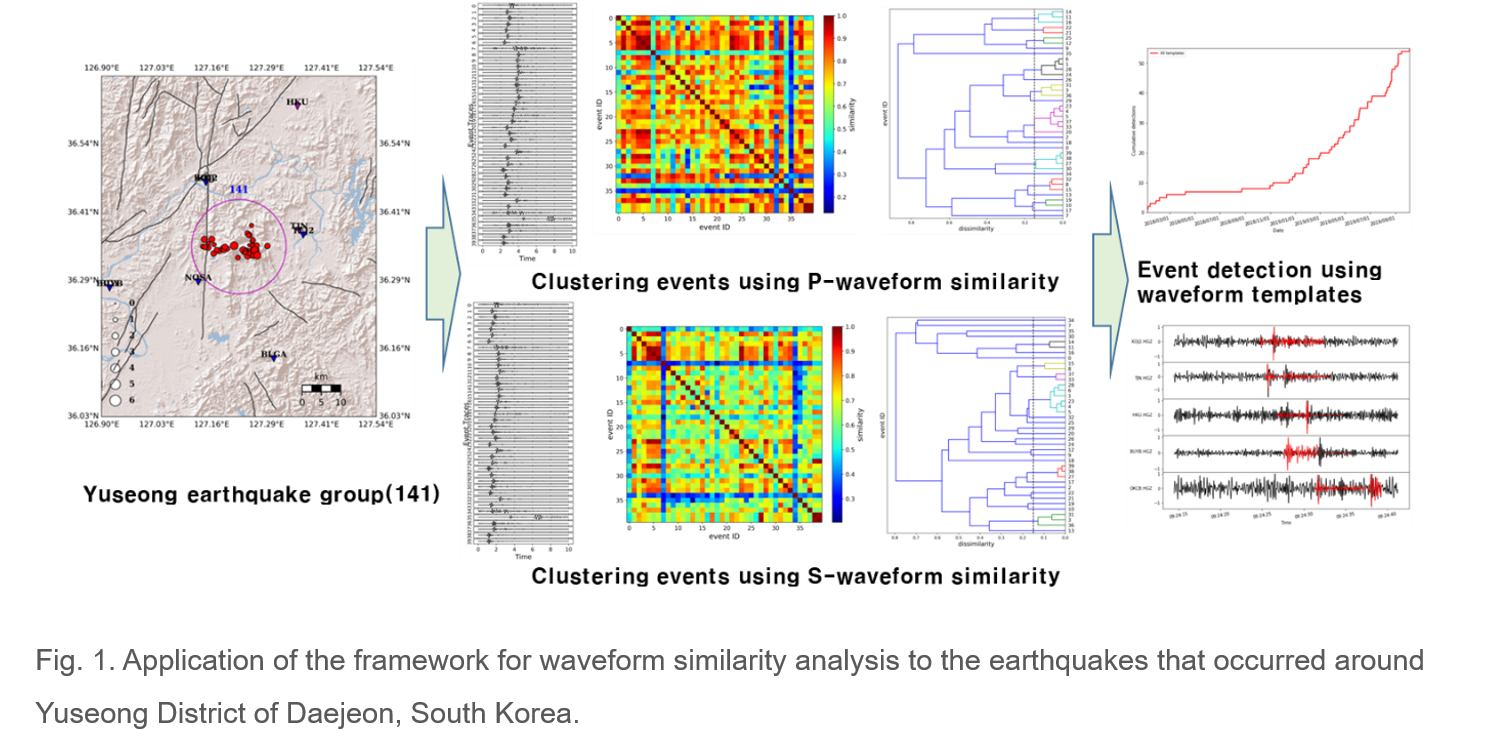
The techniques for clustering similar waveforms and grouping picking phases are necessary to locate earthquake events accurately. We developed the framework for waveform similarity analysis based on ArcLink and applied the framework to the earthquakes that occurred around Yuseong District of Daejeon, South Korea. The spatial analysis for cataloged earthquake events was performed: the crosscorrelation of waveforms including P- and S- phases were calculated to define waveform similarity that would help us obtain clustered locations. The master waveform templates were determined from clustering results. We, and then, detected missing events corresponding to the master template cross-correlated with continuous seismic records. Besides, the techniques based on waveform similarity were applied to the 2017 Pohang earthquake sequences to infer slip senses of the mainshock. We suggested explanations for the moment tensor solution of the mainshock that showed a significantly high CLVD (Compensated Linear Vector Dipole) component that is not general in earthquakes. Our results clarified the aftershock region composed of the four waveform groups, which could give clues to solve complexities of the 2017 Pohang earthquake.
Contact: Chang Soo Cho (nemex@kigam.re.kr)
Minkyung Son (kersti@kigam.re.kr)

